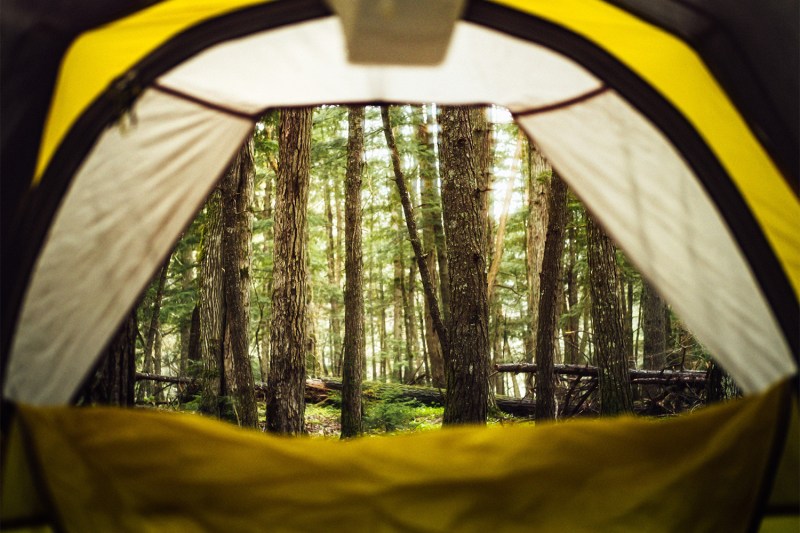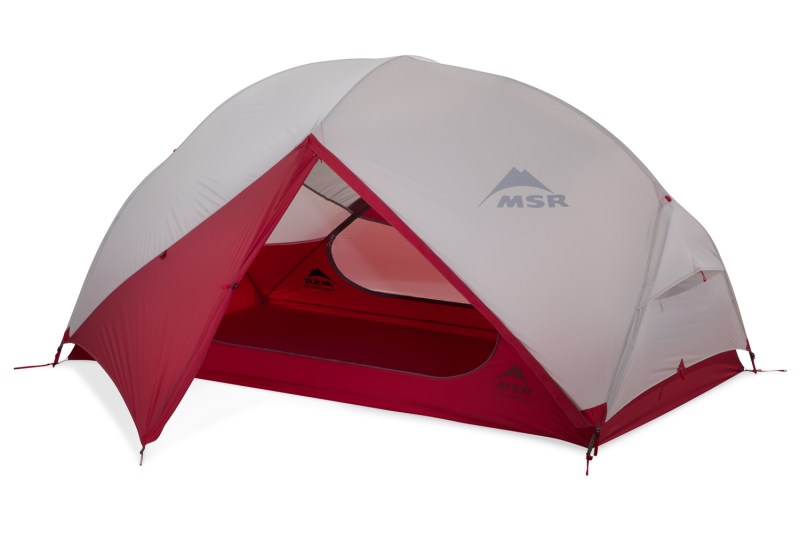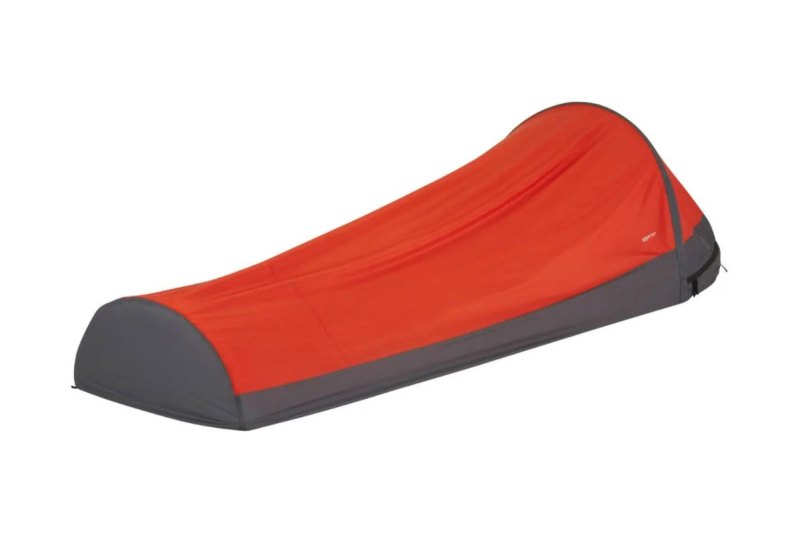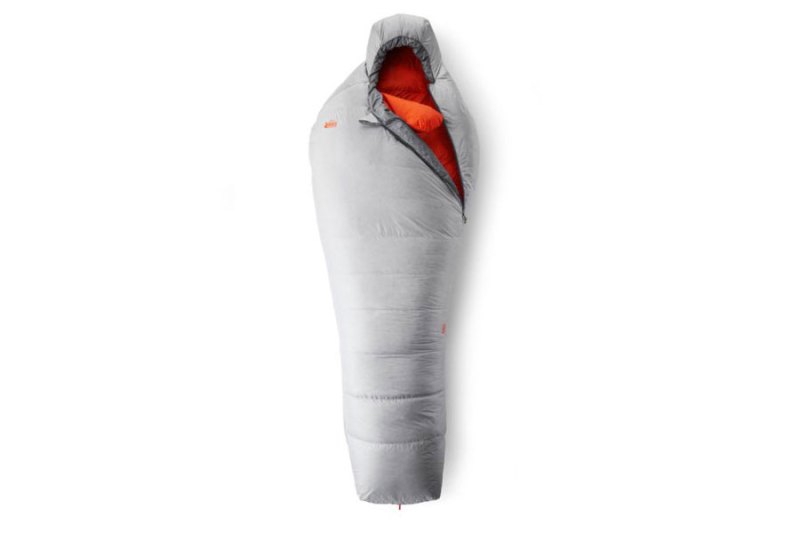
Getting a good night’s sleep on a camping or hiking trip can mean the difference between lasting memories you’ll treasure for the rest of your life or your company dealing with a sleep-deprived Sasquatch (aka you). Because no one really wants to come face-to-face with a Sasquatch — especially a tired one — let’s look into the best ways to sleep like a baby on your next backcountry journey.
It’s important to note that different body types, sleep styles, climates, and trail conditions mean there’s not a single “best” backcountry sleep system. The best solution is the one that’s right for you. Some people camp alone in warm, bug-free conditions, while others often battle freezing rain and pterodactyl-sized mosquitoes that could fly away with the family poodle. Some campers prefer to rock to sleep like a baby in a hammock between the trees. Others need to be tucked into a toasty mummy bag atop a 3-inch air mattress with their head propped up on a microfiber camp pillow. Regardless, most camp sleep systems consist of three parts:
- Shelter keeps you out of the elements and away from bitey, crawling things.
- Warmth is crucial to a good night’s sleep and, ultimately, survival.
- Comfort keeps you off the hard ground and provides further insulation — both of which also help keep you warm.
If you’re still trying to figure out this whole “sleeping in the backcountry” thing, we recommend you beg, borrow, or steal (OK, maybe not steal) a variety of gear and test it out in your own backyard or at a nearby campground. Renting your hiking and camping gear is an option too. However you get it, the bottom line is that you don’t want to be tearing the tags off your new sleep gear for the first time when you’re 10 miles from the trailhead with nary an REI in sight. You want to know what works before ever setting foot in the backcountry.
Shelter
Just like your house or apartment, a backcountry shelter keeps you out of the elements and away from critters. The more shelter you bring, the heavier it will be. Most campers prefer a tent, tarp, bivy bag, or hammock on the trail. It’s a good idea to bring some sort of shelter, even if only for emergencies.
Tents

At their most basic, tents have a mesh body secured to poles, optionally covered by a waterproof fly for camping in the rain. The best tents have good waterproof ratings, keep bugs out, and can be staked to the ground to provide a sturdy shelter. Most also can stand freely on gravel or tent platforms, which is good for camping in places like national parks.
Our Recommendations:
- Best overall tent: MSR Hubba Hubba NX Tent
- Best backpacking tents
- Best family tents
Tarps
Backpacking tarps aren’t your typical Home Depot special used for car camping. Six- or 8-foot square nylon tarps are extremely light and pack down smaller than a water bottle. With trees, trekking poles, and skilled guy line configuration, tarps can be set up as sturdy and efficient shelters. However, tarps won’t block the weather like a tent. With no bug netting, tarps won’t keep critters out, either — though there are some separate net options you can hang under the tarp. A variation on a backpacking tarp is a tarp tent — a unique, lightweight tarp shaped like a rainfly that is easier to set up than a traditional tent.
Our Recommendation:
- Best overall backpacking tarp: Sea to Summit Escapist Tarp
Bivy Sacks

A bivy (short for bivouac) sack is a narrow, waterproof shell designed to go around a sleeping bag. They’re very small and packable, inspiring many hikers to call them “bear burritos.” With a groundsheet (tarp) and a sleeping pad, a bivy sack offers the most basic shelter for a night outside. That said, they aren’t all that comfortable in bad weather. There’s also little room to move, and getting in while it’s raining can be challenging. Many people put a tarp over their bivy for a relatively lightweight and flexible sleep system. Mountaineers and ultralight hikers like them for their streamlined size and simplicity.
Our Recommendation:
- Best overall bivy: Outdoor Research Helium Bivy
Hammocks

Hammocks are once again popular for camping. With a bug net and small tarp, they create a lightweight sleep solution that you can hang almost anywhere. Some come with underquilts that hang underneath and prevent Cold Butt Syndrome (that’s a real thing — we found it on WebMD) as well as bug nets to keep insects out. Once you get the hang of a “good hang” and turn 10-15 degrees, so you lay flatter, a great night’s sleep on the trail is just two trees away.
Our Recommendations:
- Best overall camp hammock: Kammok Mantis All-in-One Hammock Tent
- Best camping and backpack hammocks
Warmth
Along with tents, a sleeping bag or camp quilt will take up more space than just about anything else in your backpack. It’s important to stay warm at night, but try to pack the lightest sleeping bag that’s appropriately rated for the weather you’ll encounter. Getting a smaller, lighter sleeping bag or quilt can give your back and legs a rest.
Sleeping Bags

There are three main components to sleeping bags: Warmth, weight/packability, and affordability. In most cases, you’re forced to pick which two are most important to you. For example, the warmest, most affordable bags are often heavier; cheap, lightweight bags generally aren’t very warm; and so on. Unless you’re planning hardcore alpine ascents, a good all-purpose bag in the 30- to 40-degree Fahrenheit range will suit most campers.
Our Recommendations:
- Best overall sleeping bag: REI Co-op Magma 30
- Best sleeping bags
Camp Quilts

Minimalist hikers appreciate cutting ounces and pounds wherever possible. Camp quilts are a great way to save on weight and space. The design works like a traditional sleeping bag but eliminates the underside. This open design is also more versatile and can provide more comfort to side sleepers and anyone who feels confined in a mummy bag.
Our Recommendations:
- Best overall camp quilt: Sierra Designs Nitro Quilt 35°
- Best camp quilts
Comfort
Shelter and warmth are essential to survival. But, to truly enjoy the camping experience, you also want to be comfortable. That’s where a nice, soft sleeping pad comes in. They’re designed to elevate you off the ground and provide insulation in the process.
Inflatable Sleeping Pads

Air mattresses and sleeping pads have come a long way from the 10-pound Coleman with the electric pump you may have had growing up. The best are small, light, and packable while still getting you 3 to 4 inches off the ground for a great night’s sleep. Air-filled pads can be inflated via a pump or just your breath. Some have two sections that can be inflated separately for added comfort and versatility. Those with insulation will have a higher R-value and keep you warmer. Watch out for crunchy fabrics that might be noisy when you move in the night. Lastly, don’t forget to bring the patch kit to fix any holes from sharp rocks or sticks.
Our Recommendations:
- Best overall inflatable sleeping pad: Therm-a-Rest NeoAir Xtherm Sleeping Pad
- Best inflatable sleeping pads
Foam Sleeping Pads

To sidestep the headaches of patch kits and inflating altogether, opt for a closed-cell foam sleeping pad. These are made with a thin, dense foam that is nearly indestructible but not as comfortable as their air-filled counterparts. They’re lightweight, last forever, and can even double as a camp chair in a pinch.
Our Recommendation:
- Best overall foam sleeping pad: Nemo Switchback Sleeping Pad


